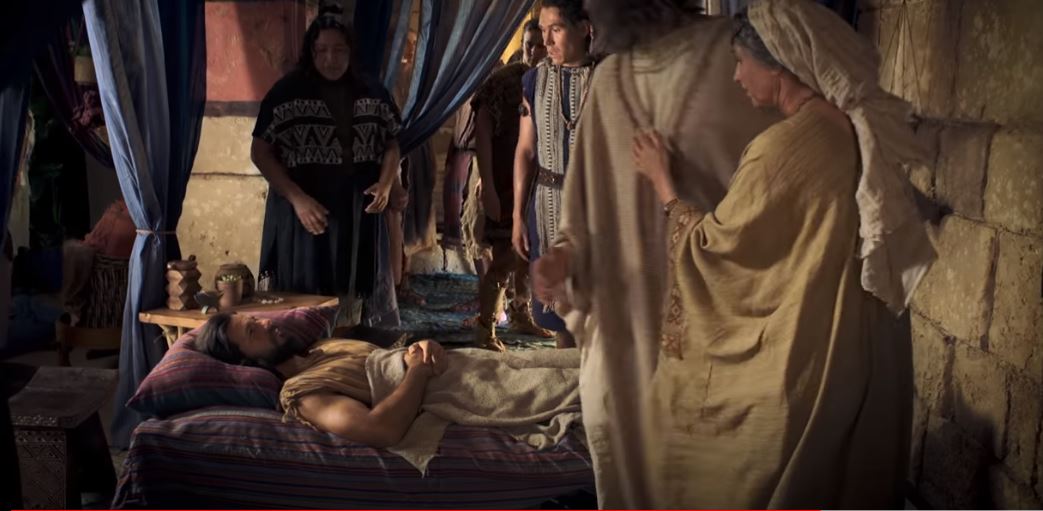To accompany your Come Follow Me study for July 29 to August 4
You may enjoy watching the following videos in connection with your study this week:
And you will enjoy the following related commentary from the Institute of Religion Book of Mormon Student Manual:
If you would like a Kahoot game related to this material which you could use for personal study or use with your family or your class, click here: https://create.kahoot.it/share/alma-36-38/1d140d58-3409-4280-a117-5ef746680674 . To use it with a group, after clicking on this link, you will need to log into Kahoot, creating a free account if you have not done so previously, then click on the blue “Start” button. Some of the Kahoot questions may presuppose that the player has read through the suggested answers to the following Points to Ponder and at least has browsed the Institute student manual as well.
Points to Ponder in Alma 36-38
1. For how long was Alma “racked with eternal torment”?
a. It never happened
b. 2 days
c. 3 days
d. Forever–otherwise it wouldn’t have been “eternal torment.”
2. How do we best explain the apparent contradiction between Alma 36:10 and Mosiah 27:22-23?
a. “If there are faults they are the mistakes of men.”
b. This is a great mystery for which we have no adequate explanation.
c. Alma exaggerated a bit in his later account.
d. There is no contradiction because the two passages aren’t talking about the same event.
3. How was it possible for Alma to complete his repentance and be “born of God” in so short a time? (36:23.) Isn’t restitution part of repentance? How could he make restitution while he was unconscious on the ground? Or had he really not repented yet?
4. If Alma could really “remember [his] pains no more,” as he said in Alma 36:19, how was he able to tell us about them? What larger significance does your answer have for our (and God’s) “remembering” or “forgetting” other things?
5. The greatest example of chiasmus in sacred literature is probably Alma 36, where Alma mentions 17 different elements of his conversion story and then repeats them again in reverse order. How many of those elements can you find? What is at the very center of the chiasmus, where the list begins again in reverse order?
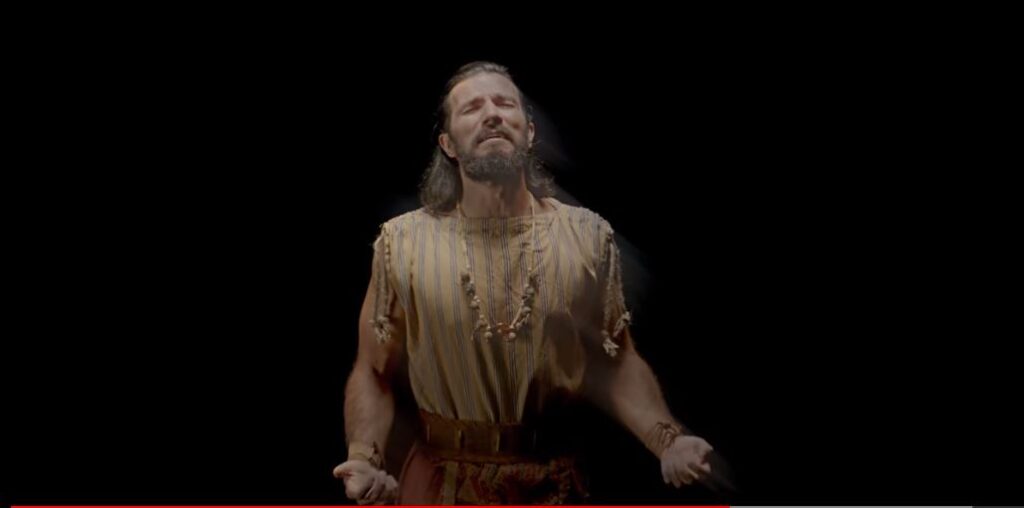
6. If you could highlight only three verses in all of Alma 37, which three would they be, and why?
7. How can Alma say that the plates of brass would be preserved and go forth unto “every nation, kindred, tongue, and people” and would “retain their brightness,” when we don’t even know where they are and they are probably buried some place in the ground and are not so shiny after 1600 years? (37:4-5)
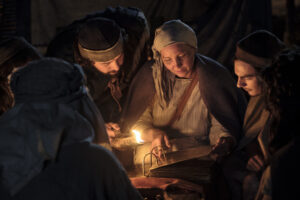
8. What serves the same role in missionary work today that the brass plates served in Ammon’s day?
9. What examples can you tell us about where you have personally witnessed “that by small and simple things are great things brought to pass”? (37:6)
10. How do you feel about the commandments of God being so “strict” as Alma explains in 37:13? Why can’t the Lord be a little more flexible? Doesn’t He want us to have any fun?
11. What did Alma want his son to publicize about the Jaredite secret combinations and what did he want him to keep secret? Why? (37:21-32)
13. Can you explain in your own words the symbolism of the Liahona? What was it supposed to teach Lehi’s family, and what is it supposed to teach us? (37:38-45.)

14. What small change in wording and punctuation of 37:41 would make it clearer?
15. What do you consider the most important verses in Alma 38 so far as their application to missionary work today is concerned? Why?
16. Why does Alma say “bridle all your passions, that ye may be filled with love”? (38:12) Shouldn’t there be passion in love?

17. Alma’s final counsel to both Helaman and Shiblon, as recorded in today’s reading, included a reminder to
a. Be appropriately serious as they taught the gospel
b. Remember to call upon the name of the Lord
c. Cast their sins behind them
d. Seek the Spirit to know for themselves that his testimony was true
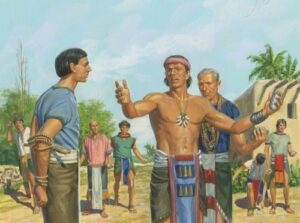
Possible Answers to Points to Ponder in Alma 36-38
1. For how long was Alma “racked with eternal torment”?
a. It never happened
b. 2 days
c. 3 days. As D&C 19 makes clear, “eternal torment” doesn’t mean that any one individual necessarily suffers it eternally.
d. Forever–otherwise it wouldn’t have been “eternal torment.”
2. How do we best explain the apparent contradiction between Alma 36:10 and Mosiah 27:22-23?
a. “If there are faults they are the mistakes of men.”
b. This is a great mystery for which we have no adequate explanation.
c. Alma exaggerated a bit in his later account.
d. There is no contradiction because the two passages aren’t talking about the same event. [Evidently the priests didn’t begin their fasting and prayer until Alma had been in his unresponsive state for about a day.]
3. How was it possible for Alma to complete his repentance and be “born of God” in so short a time? (36:23.) Isn’t restitution part of repentance? How could he make restitution while he was unconscious on the ground? Or had he really not repented yet?
As Alma 34:31 makes clear, when one repents and turns to God, “immediately” the great plan of redemption can become operative in his life. Restitution is NOT a prerequisite, but the DESIRE to make restitution is (as Alma evidences in Alma 36:24.)
4. If Alma could really “remember [his] pains no more,” as he said in Alma 36:19, how was he able to tell us about them? What larger significance does your answer have for our (and God’s) “remembering” or “forgetting” other things?
Alma himself clarifies that while he could cognitively “remember” his sins, he was no longer “harrowed up” or tormented by the memory of them. God, who knows all things, will obviously never “forget” our sins in the sense of being unaware of them, nor should we. But like Alma, we can reach the point of being eternally and joyfully grateful for the atonement rather than burdened by an eternal sense of guilt. It would be a great curse to us if we ever literally forgot our past sins to the point that we were unaware that we had ever needed the atonement!
5. The greatest example of chiasmus in sacred literature is probably Alma 36, where Alma mentions 17 different elements of his conversion story and then repeats them again in reverse order. How many of those elements can you find? What is at the very center of the chiasmus, where the list begins again in reverse order?
See the following outline, which color codes the various elements. At the very center is Alma’s remembering his father’s teachings concerning Jesus Christ and his calling upon the Savior in his heart.
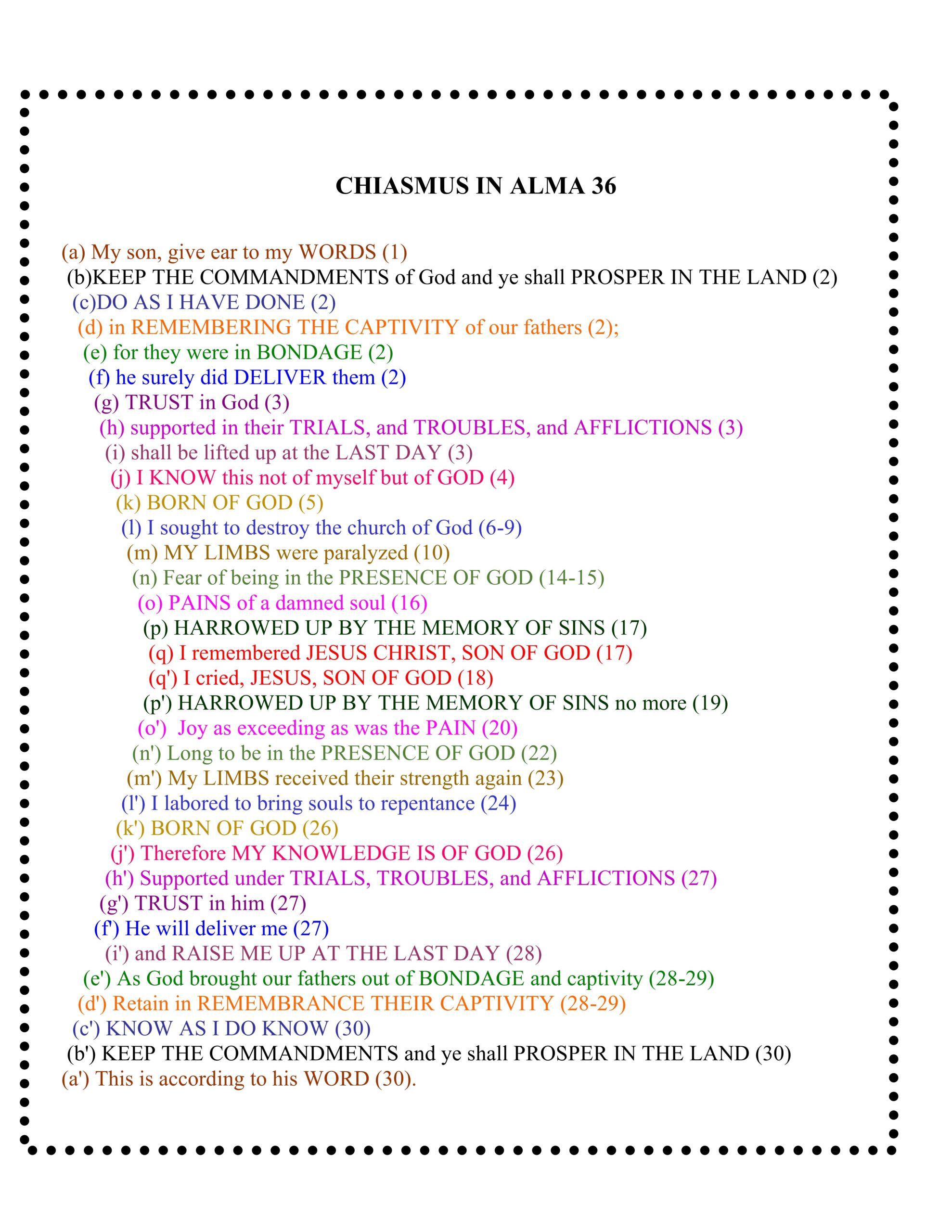
If this is a subject you find interesting, you may want to also read the article at https://knowhy.bookofmormoncentral.org/knowhy/why-was-alma-converted and see the related video at:
6. If you could highlight only three verses in all of Alma 37, which three would they be, and why?
Your choice. Mine might be:
37:6—a reminder of the importance of the “little things”
37:35—an important reminder of the importance of learning while we are young, or, if we are no longer young, the importance of teaching those who are
37:37—the importance of constant prayer
7. How can Alma say that the plates of brass would be preserved and go forth unto “every nation, kindred, tongue, and people” and would “retain their brightness,” when we don’t even know where they are and they are probably buried some place in the ground and are not so shiny after 1600 years? (37:4-5)
Perhaps he refers to the fact that the Bible, which is our current version of the brass plates, would have eternal and universal import. Yet it is also quite possible that the original plates of brass that Lehi’s family had will also someday be revealed and that we’ll be able to enjoy the words of Zenos, Zenock, and others whose writings are missing from our current Old Testament.
8. What serves the same role in missionary work today that the brass plates served in Ammon’s day?
The Book of Mormon. Preach My Gospel reminds missionaries: “The Book of Mormon, combined with the Spirit, is your most powerful resource in conversion. It provides powerful evidence for the divinity of Christ. It is also proof of the Restoration through the Prophet Joseph Smith. An essential part of conversion is receiving a witness from the Holy Ghost that the Book of Mormon is true.“
9. What examples can you tell us about where you have personally witnessed “that by small and simple things are great things brought to pass”? (37:6)
Your choice. A classic illustration is the old example of “For Want of a Nail”:
For want of a nail the shoe was lost.
For want of a shoe the horse was lost.
For want of a horse the rider was lost.
For want of a rider the message was lost.
For want of a message the battle was lost.
For want of a battle the kingdom was lost.
And all for the want of a horseshoe nail.
10. How do you feel about the commandments of God being so “strict” as Alma explains in 37:13? Why can’t the Lord be a little more flexible? Doesn’t He want us to have any fun?
The Lord isn’t so concerned about our having what the world calls “fun” as about our having something much deeper—joy. And as there is a law upon which all blessings are predicated, a loving God cares enough about us to reveal to us the instructions for achieving that joy. Even God can’t make one happy in wickedness. Just as a computer won’t open a file if we type the name with just one erroneous letter, so we cannot experience the joy which comes from complete obedience if we are intentionally disobeying even in small matters.
11. What did Alma want his son to publicize about the Jaredite secret combinations and what did he want him to keep secret? Why? (37:21-32)
Alma wanted him to record the results of the Jaredites’ having succumbed to secret combinations so his readers would be motivated to avoid and oppose them, but he did not want the details of their specific oaths and signs and activities to be recorded lest the wicked find it too easy to adopt and utilize them.
12. Why did Alma want Helaman to have “an everlasting hatred”? (37:32) Aren’t saints supposed to feel only love for everyone and everything?
We aren’t supposed to hate people, but we are definitely supposed to hate “sin and iniquity.” One of the great defects of modern society is its tolerance not only of sinners but of sin itself.
13. Can you explain in your own words the symbolism of the Liahona? What was it supposed to teach Lehi’s family, and what is it supposed to teach us? (37:38-45.)
The Liahona of Lehi’s day can be seen as a symbol for the guidance we can all receive from the Holy Ghost, leading us to our own eternal “promised land.” In both cases, the guidance came (or comes) according to one’s faith in God and diligence in following its direction.
14. What small change in wording and punctuation of 37:41 would make it clearer?
It could make more sense if it read: “Nevertheless, because those miracles were worked by small means, even though they did show unto them marvelous works, they were slothful and forgot to exercise their faith and diligence, and then those marvelous works ceased, and they did not progress in their journey.” Remember, the punctuation in the first edition of the Book of Mormon was supplied by the typesetter, John Gilbert, who wasn’t even a member of the Church. This may be a case where John got it wrong.
15. What do you consider the most important verses in Alma 38 so far as their application to missionary work today is concerned? Why?
Your choice. Probably verses 10-12 and 15 should be on the list, reminding missionaries to be diligent, not prideful, bold, but not overbearing, to control their passions during their mission, and to be appropriately sober, or serious. “Sober” is not the opposite of happy. It is the opposite of “lightminded.”
16. Why does Alma say “bridle all your passions, that ye may be filled with love”? (38:12) Shouldn’t there be passion in love?
Not in the kind of love Alma wanted his single son to have as a missionary. Unfortunately, the word “love” in English has multiple meanings, not always much related to each other. In marriage, of course, there can appropriately be both passion and love in all its manifestations, but prior to marriage it is important that one “bridle,” or control that passion, just as a bridle is used to control a horse. Otherwise “love” becomes only lust, the antithesis of true “love” in the sense of a concern for the welfare of another. A celestial love is possible only with the help of the Holy Ghost, which comes to one only when righteous.
17. Alma’s final counsel to both Helaman and Shiblon, as recorded in today’s reading, included a reminder to
a. Be appropriately serious as they taught the gospel
b. Remember to call upon the name of the Lord
c. Cast their sins behind them
d. Seek the Spirit to know for themselves that his testimony was true
